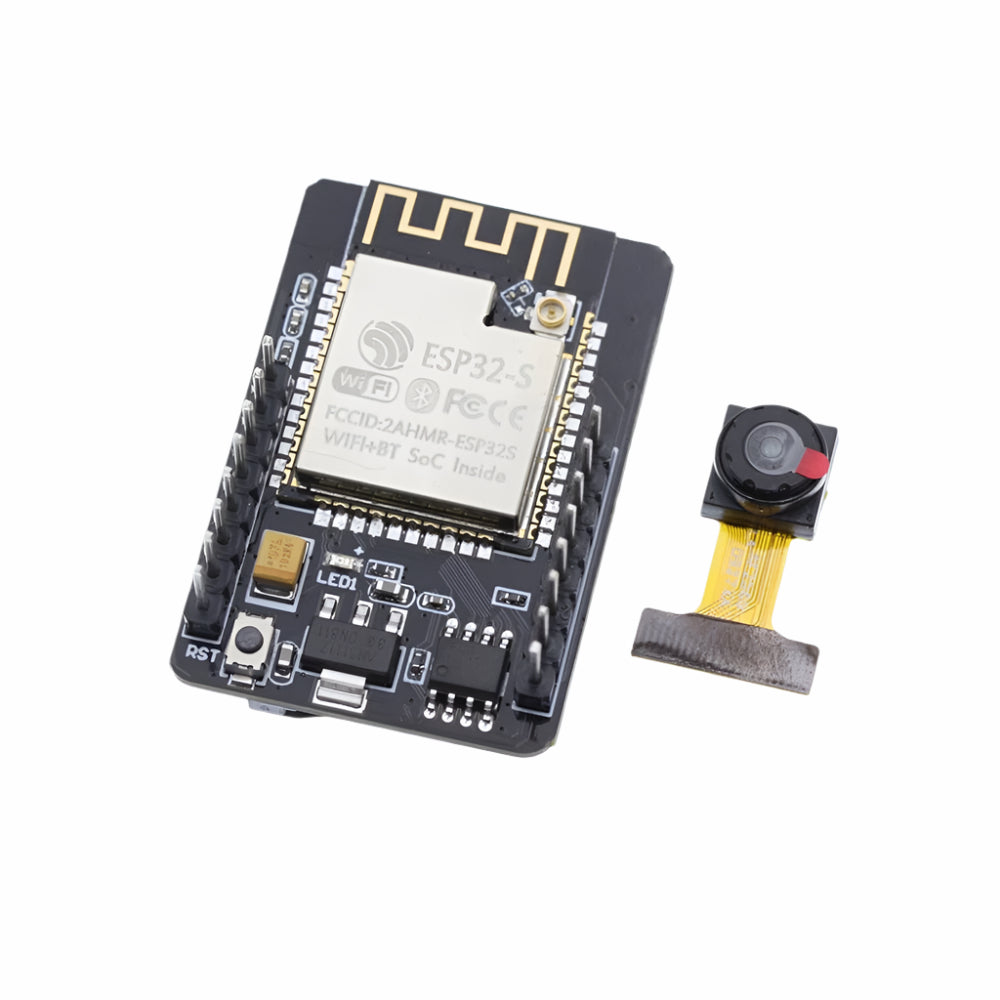
This guide demonstrates how to build a Bluetooth-controlled car using an ESP32 module, an L298N motor driver, and a readily available 4WD car chassis kit. The project utilizes the freely available "Dabble" mobile app for control, compatible with both Android and iOS devices.
Components and Supplies
![]()
4WD Car Chassis Kit - BUY NOW
ESP32 Module - BUY NOW
L298N Motor Driver Module - BUY NOW
Jumper-Wires - BUY NOW
![]()
7-12 V DC Battery (in our case lipo 2s battery)
Step 1: Assembly
Mounting the Motors and Chassis
Secure the motors onto the chassis using the provided connectors and screws.
Attach and secure the chassis plates.
Wire the motors: connect red wires together and black wires together.
Attach the L298N motor driver to the chassis using double-sided tape.
Step 2: Circuit Connections
L298N Motor Driver to Motors
Right-side motors → OUT1 & OUT2 (L298N)
Left-side motors → OUT3 & OUT4 (L298N)
L298N VCC → 12V Battery
L298N GND → Common GND
ESP32 to L298N Motor Driver
ESP32 receives 5V and GND from the L298N.
Motor control pins connected based on circuit diagram.

Step 3: Uploading the Code
Before uploading the code, ensure you have installed the ESP32 board support package and the Dabble ESP32 library in the Arduino IDE.
Step 4: Connecting with Dabble App
Download & Install the Dabble mobile app.
Pair with ESP32: Connect to "My Bluetooth Car."
Control the Car: Use the app’s gamepad controls for movement.
Final Demonstration
The car responds to Bluetooth commands sent from the Dabble app, allowing real-time control via a smartphone.
#include <DabbleESP32.h>
#define IN1 16
#define IN2 17
#define IN3 18
#define IN4 19
#define ENA 5
#define ENB 6
void setup() {
pinMode(IN1, OUTPUT);
pinMode(IN2, OUTPUT);
pinMode(IN3, OUTPUT);
pinMode(IN4, OUTPUT);
pinMode(ENA, OUTPUT);
pinMode(ENB, OUTPUT);
Dabble.begin("My Bluetooth Car");
}
void loop() {
Dabble.processInput();
}
GamePad.onPressed(GAMEPAD_UP, []() {
moveForward();
});
GamePad.onPressed(GAMEPAD_DOWN, []() {
moveBackward();
});
GamePad.onPressed(GAMEPAD_LEFT, []() {
turnLeft();
});
GamePad.onPressed(GAMEPAD_RIGHT, []() {
turnRight();
});
GamePad.onPressed(GAMEPAD_STOP, []() {
stopMotors();
});
void moveForward() {
digitalWrite(IN1, HIGH);
digitalWrite(IN2, LOW);
digitalWrite(IN3, HIGH);
digitalWrite(IN4, LOW);
}
void moveBackward() {
digitalWrite(IN1, LOW);
digitalWrite(IN2, HIGH);
digitalWrite(IN3, LOW);
digitalWrite(IN4, HIGH);
}
void turnLeft() {
digitalWrite(IN1, LOW);
digitalWrite(IN2, HIGH);
digitalWrite(IN3, HIGH);
digitalWrite(IN4, LOW);
}
void turnRight() {
digitalWrite(IN1, HIGH);
digitalWrite(IN2, LOW);
digitalWrite(IN3, LOW);
digitalWrite(IN4, HIGH);
}
void stopMotors() {
digitalWrite(IN1, LOW);
digitalWrite(IN2, LOW);
digitalWrite(IN3, LOW);
digitalWrite(IN4, LOW);
}











